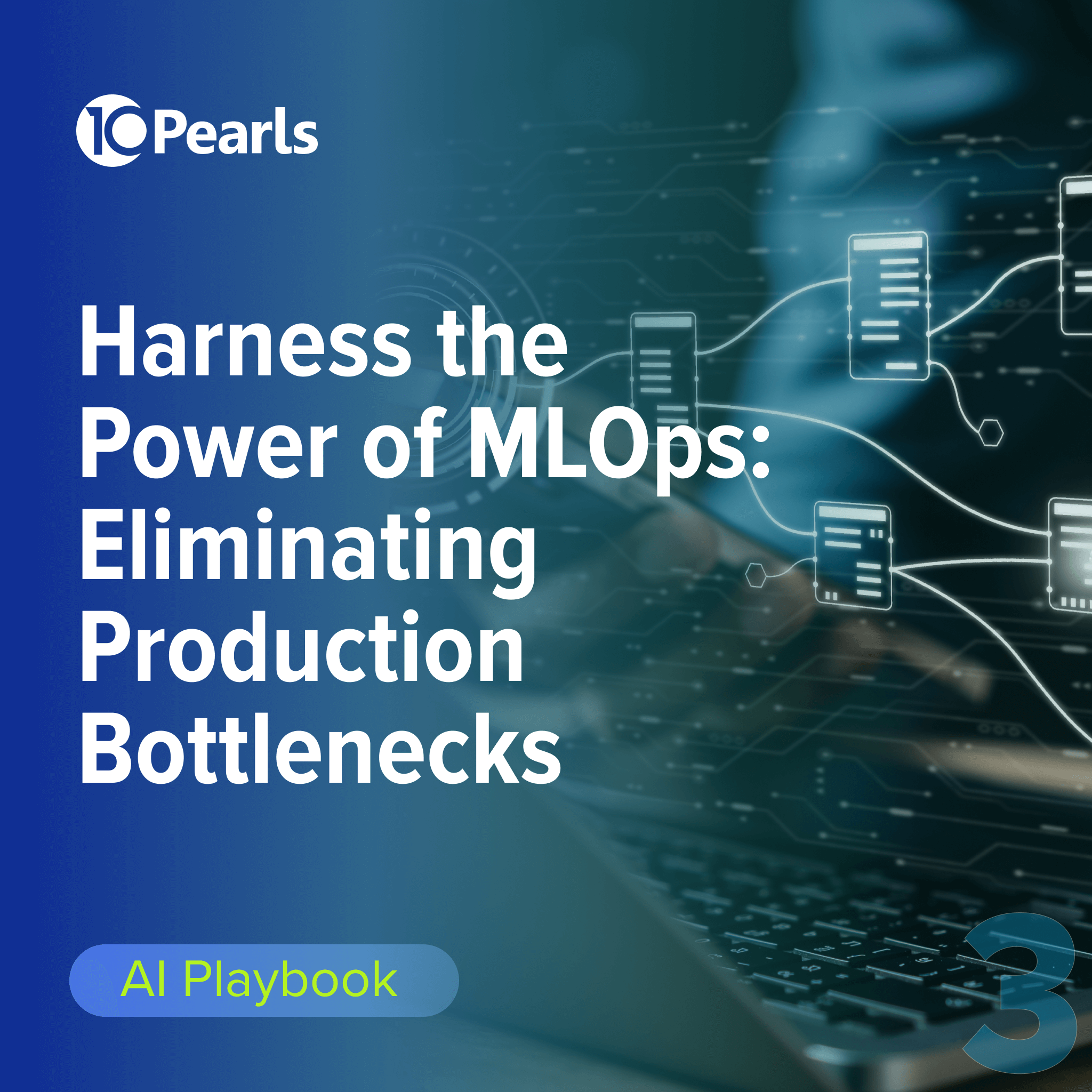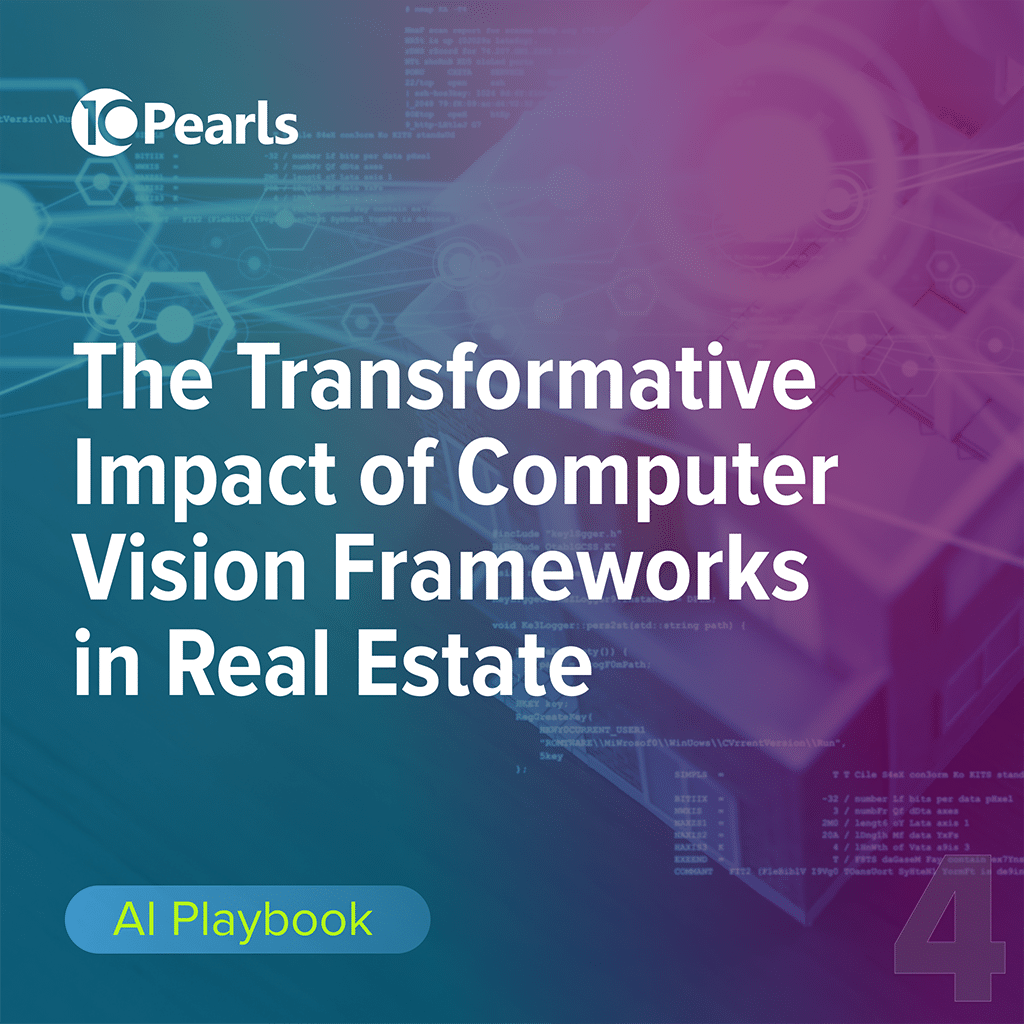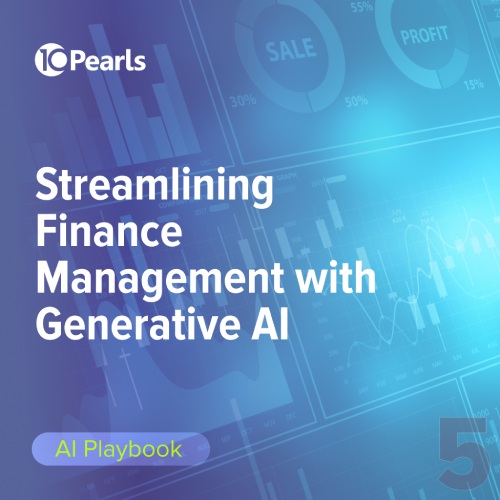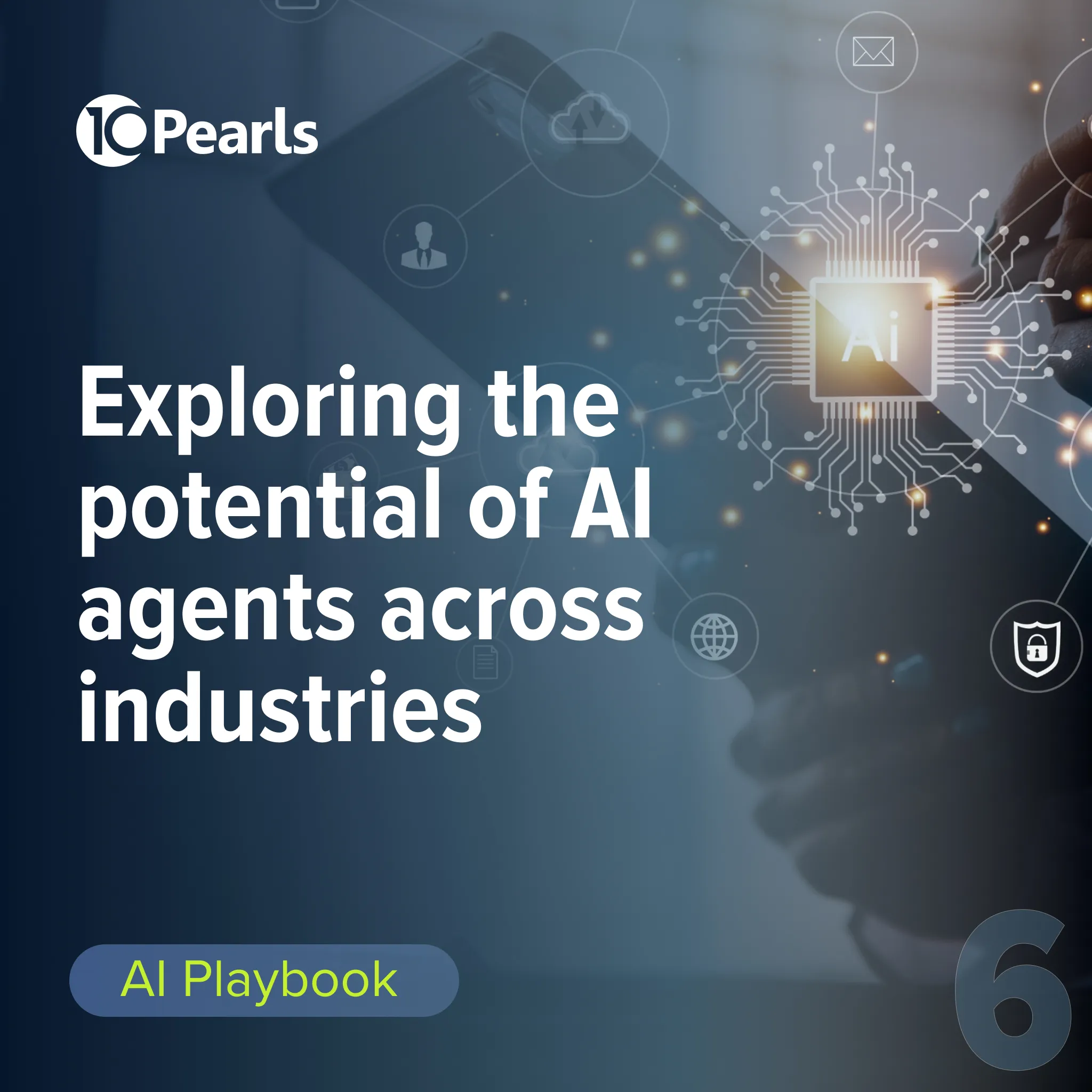AI-Powered Software Engineering:
What's Really Working
(And What's Just Noise)
By 10Pearls editorial team
A global team of technologists, strategists, and creatives dedicated to delivering the forefront of innovation. Stay informed with our latest updates and trends in artificial intelligence, advanced technology, healthcare, fintech, and beyond. Discover insightful perspectives that shape the future of industries worldwide.
AI can deliver exceptional productivity and efficiency gains for specific, defined tasks in software engineering, but will often fail if not strategically implemented in alignment with core business objectives.
Understanding this, and building your engineering practice around it, will determine whether your team achieves multiplying productivity gains or merely adds another flashy but ineffective tool to an already cluttered stack.
As more engineering teams adopt AI, a clear picture emerges: AI for software engineering isn’t replacing developers. It’s creating a new block between those who use it to move faster and those who get left behind.

- What AI for Software Engineering Actually Delivers
- Boilerplate Code and CRUD Operations
- Test Generation at Scale
- Documentation That Drives User Adoption
- Code Review Acceleration
- Why Pattern Matching Still Delivers Business Value
- The Architectural Complexity Wall: Where AI Hits Its Limits
- Where System Design Demands Human Judgment
- The Technical Debt Multiplication Risk
- The Architecture-First Future: AI-Native System Design
- From Coding-First to Architecture-First Development
- Building Systems Designed for AI Augmentation
- Why Microservices and Modular Design Matter More Than Ever
- The Convergence of AI Coding Assistants and Infrastructure-as-Code
- How to Shift from Faster Coding to Smarter Architecturer
- How Top Performers Achieve Exponential Leverage
- Exponential Gains for Systems Thinkers
- Framework Users vs Fundamentals Masters
- Building Competitive Advantage Through Talent Development
- Partner with 10Pearls for AI-Augmented Engineering Excellence
What AI for Software Engineering Actually Delivers
Today, about 70% of routine software engineering tasks can be automated with AI tools and technology. However, this does not mean AI is replacing engineers; rather it allows team to redirect engineering capacity toward innovation that delivers real business value rather than repetitive implementation.
Boilerplate code and CRUD operations
Developers report 30% improvement in code writing and testing activities, when using AI assistants. This results in 35% increase in feature velocity leading to faster market validation and higher user retention.
Test generation at scale
AI-assisted test generation has transformed quality assurance workflows. GitHub’s research with 95 professional developers found that teams using AI completed tasks 55% faster on average, with higher completion rates of 78% vs 70% without AI. The time difference was stark: 1 hour 11 minutes with AI versus more than double, 2 hours 41 minutes, without.
For a healthcare technology client, comprehensive AI-generated test coverage translated into 40% fewer production defects, directly impacting customer trust and reducing churn in a compliance-sensitive environment where reliability drives competitive advantage.
Documentation that drives user adoption
Perhaps AI’s most underestimated impact lies in documentation. Tasks that consumed days of developers’ time, such comprehensive API documentation, architectural decision records and onboarding guides, now can be completed in hours and with higher consistency.
A SaaS client reported that improved documentation quality contributed to a 35% reduction in support tickets and 45% faster developer onboarding for new client implementations, with both positively impacting their expansion revenue.
Code review acceleration
AI-augmented code review tools provide pattern recognition at superhuman scale, catching security vulnerabilities, performance bottlenecks and architectural inconsistencies before human reviewers engage. However, Google’s 2024 DORA report notes a 7.2% decrease in delivery stability with increased AI use, despite faster code reviews, underscoring that human oversight on system-level design decisions remains critical.
Why pattern matching still delivers business value
Current data shows AI now generates 41% of all code, with 256 billion lines written in 2024 alone. This massive training enables AI to generate solutions adhering to current best practices for specific technology stacks.
Organizations that effectively navigate AI’s limitations and start exploiting its strengths are the ones achieving measurable increases in delivery velocity without compromising quality, a combination that directly translates to competitive positioning in fast-moving markets.
The Architectural Complexity Wall: Where AI Hits Its Limits
AI can accelerate software engineering productivity but struggles with architectural complexity. Knowing this helps teams avoid debt and focus on real progress.
Where system design demands human judgment
Distributed systems expose AI’s fundamental reasoning limitations. The challenge isn’t implementation; it’s reasoning about multidimensional trade-offs simultaneously.
- Should this service prioritize consistency or availability during network partitions?
- What’s the right backpressure strategy under varying load?
- How do you balance latency requirements against cost constraints?
These questions require understanding business context, operational realities, and subtle technical implications that current AI cannot grasp.
Research validates this limitation. Studies show that when working with existing complex systems, productivity gains drop to just 10-30%, and sometimes result in slowdowns when AI suggestions lead engineers astray. The complexity of existing architectures creates context that AI struggles to comprehend fully.
The technical debt multiplication risk
AI-generated code usually looks excellent in isolation. It passes tests. It follows conventions. It implements requirements. Yet it often lacks the deeper architectural coherence that distinguishes maintainable systems from long-term liabilities.
Organizations achieving sustained value from AI-augmented software engineering implement architectural review gates. They use AI for implementation velocity while maintaining human oversight on system-level design decisions.
This balances AI for speed with humans for coherence, and determines whether increased velocity translates to sustainable competitive advantage or merely faster accumulation of technical debt.
The Architecture-First Future: AI-Native System Design
The shift in AI-powered software engineering isn’t happening at the code level; it’s happening at the architectural level. Organizations have restructured how they design systems for AI collaboration and creating a competitive advantage.
This means enterprises are moving from, “how do we add AI to our development process,” to, “how do we architect systems that AI can safely and effectively contribute to from day one.”
From coding-first to architecture-first development
The traditional software development hierarchy placed implementation at the center: design minimally, code extensively, refactor reactively.
AI inverts this completely. In AI-native organizations, senior engineers spend significantly more time on architectural decisions—defining system boundaries, specifying interface contracts, establishing failure mode handling, and determining scalability patterns.
Implementation becomes a translation exercise, taking well-specified architecture and generating code that satisfies those specifications.
Building systems designed for AI augmentation
Organizations are converging on architectural principles that maximize AI contribution while minimizing risk:
- Radical Modularity: Design systems as small, highly cohesive modules with minimal coupling. Each module has clear responsibilities and strict interface contracts. This makes AI-generated components safe to integrate, as they must satisfy defined contracts, making verification straightforward.
- Contract-First Design: Define interfaces and contracts before implementation. When contracts are explicit and comprehensive, AI can generate implementations that satisfy them. Testing becomes contract verification rather than comprehensive code review.
- Test-Driven Architecture: Develop comprehensive test suites that encode business logic, edge cases, and performance requirements. AI generates code that passes these tests—turning quality assurance into a compilation-like process rather than manual review.
- Declarative Over Imperative: Use declarative descriptions of desired system state over imperative procedural code. AI excels at translating declarative specifications into imperative implementations while humans struggle with the reverse.
- Observable by Default: Build in observability at every level, including detailed logging, metrics, tracing, and monitoring. This creates feedback loops that help AI (and humans) understand system behavior and identify issues quickly.
Why microservices and modular design matter more than ever
Microservices may have once seemed like over-engineering, but have suddenly started to make sense in an AI-powered world.
When AI is directed with well-specified service boundaries, clear interface contracts, and comprehensive acceptance criteria, it can produce production-quality service implementations.
Coordination challenges, service configuration, distributed tracing, and eventual consistency, remain properly human concerns, creating a natural division of labor that plays to each participant’s strengths.
Interestingly, many successful AI-native architectures start as independent modules. This provides the benefits of modularity (clear contracts, focused components, and easy AI contribution) without the operational complexity of distributed systems.
As services require independent scaling, modules can be extracted into microservices with minimal refactoring because the boundaries were already clearly defined.
The convergence of AI coding assistants and infrastructure-as-code
The convergence of AI assistants and infrastructure-as-code represents one of the most underappreciated transformations in software engineering.
Engineers can now describe desired infrastructure properties, for example, “I need a scalable web application with auto-scaling based on request latency, deployed across multiple availability zones with automated failover,” and AI generates Terraform, CloudFormation, or Kubernetes configurations that satisfy those requirements.
This democratizes infrastructure expertise while maintaining quality, as AI has invested in millions of infrastructure patterns and generates configurations following current best practices.
This convergence multiplies the impact of DevOps practices dramatically. Organizations can iterate infrastructure designs rapidly and maintain consistency across environments, eliminating drift and adapting to changing requirements faster as modifications propagate systematically.

How to Shift from Faster Coding to Smarter Architecture
AI makes implementation faster but can’t fix poor architecture. So investing in architectural excellence becomes the highest-leverage activity.
- From Code Review to Architecture Review: Shifting senior engineer focus from reviewing syntax to reviewing system design, interface contracts, and architectural decisions.
- From Developer Productivity to System Evolvability: Optimizing your systems so they can adapt to changing requirements rather than maximizing short-term feature velocity.
- From Technology-First to Problem-First: Starting with clear problem definitions and requirements, then using AI to explore solution approaches rather than prematurely committing to specific implementations.
These shifts require deliberate culture change and leadership alignment. Organizations successfully making this transition report that the payoff period is surprisingly short, often 3-6 months before productivity gains become apparent, with compounding benefits extending years into the future.
How Top Performers Achieve Exponential Leverage
AI is an amplifier, not an equalizer, for software engineering capabilities. And amplifiers make existing differences louder.
Organizations expecting AI to level their engineering talent are discovering the opposite: the performance gap between top engineers and average performers is widening dramatically. Understanding this dynamic is critical for talent strategy and competitive positioning.
Exponential gains for systems thinkers
Engineers are reporting productivity multipliers that sound fictional but are validated by delivery metrics. AI tools help experienced developers significantly more than beginners, creating what researchers call, “the knowledge paradox.”
Principal engineers who once needed weeks to prototype new services now accomplish it in days. Architects who struggled to document complex systems now maintain documentation effortlessly. Senior developers who spent many nights writing tests now generate comprehensive test suites in minutes.
This isn’t about typing faster. It’s about operating at a different level of abstraction.
For organizations competing on innovation velocity, this creates dramatic competitive advantages. A single exceptional engineer with AI leverage can accomplish what previously required a full team, not by replacing teammates but by increasing scope capacity.
Framework users vs fundamentals masters
AI can generate Redux boilerplate, Spring configurations and React component structures, but it cannot decide whether Redux is the right choice for your application architecture. Senior engineers use AI to accelerate what they already know how to do, while junior engineers often struggle to debug AI-generated code they don’t fully understand. This creates a dependency where less experienced developers must repeatedly return to AI for fixes rather than developing expertise to handle issues independently.
Building Competitive Advantage Through Talent Development
Organizations capturing exponential value from AI-powered software engineering are making deliberate talent investments.
They’re upskilling teams in system design, distributed systems patterns, and architectural decision-making, the higher-level thinking that AI amplifies rather than replaces. They’re establishing architectural review practices that maintain system coherence while enabling AI-assisted implementation. They’re creating career paths that reward systems thinking and mentorship over pure coding velocity.
By 2028, 75% of enterprise software engineers will use AI code assistants, up from less than 10% in early 2023. This rapid adoption means organizations must invest now in developing engineers who can leverage these tools effectively rather than depend on them blindly.
These investments deliver sustained competitive advantages. Engineers who develop deep expertise in using AI for leverage become force multipliers. They ship faster without accumulating technical debt. They maintain quality while increasing scope. They create architectures that support future innovation rather than constraining it.
For organizations competing on technology differentiation, building this capability internally creates a defensive moat that competitors cannot easily replicate. It’s not just about having AI tools, it’s about having engineers who understand when and how to use them for maximum business impact.
Partner with 10Pearls for AI-Augmented Engineering Excellence
Navigating the AI transformation in software engineering requires more than just the tech; it requires strategic expertise, proven implementation methodologies, and deep understanding of what works versus what’s just noise.
10Pearls brings a business-first approach to help organizations build and integrate AI-augmented development practices with cutting-edge AI tools and architectural discipline, empowering them to achieve exponential productivity gains without accumulating technical debt.
Our approach focuses on sustainable competitive advantages rather than short-term productivity metrics. We assess your current processes and capabilities, design AI-native architectures suited to your business requirements and upskill your engineering organization for long-term success. We’ve implemented AI-assisted development workflows across fintech, healthcare, retail, and enterprise SaaS organizations, delivering measurable improvements in time-to-market, product quality, and engineering capacity.
Contact 10Pearls to start your AI transformation journey or scale existing implementations.

Get in touch with us
Related articles







